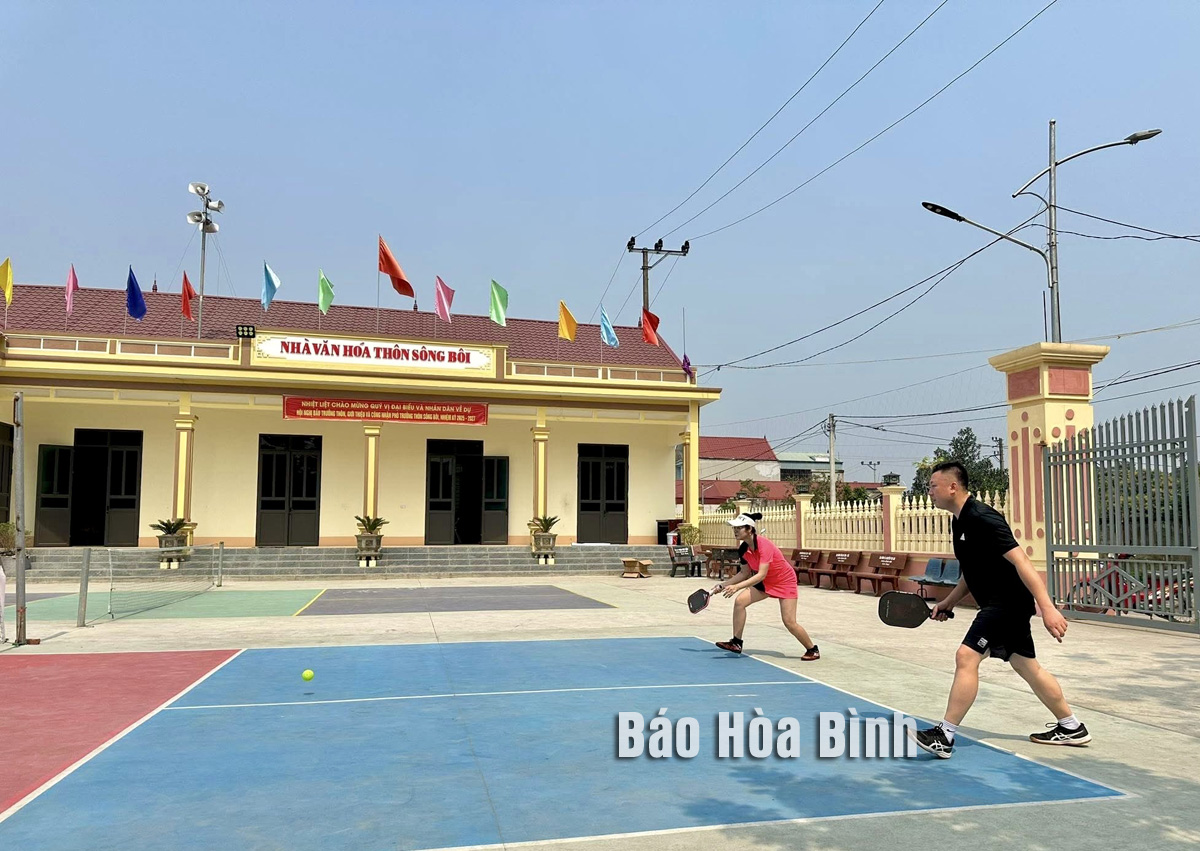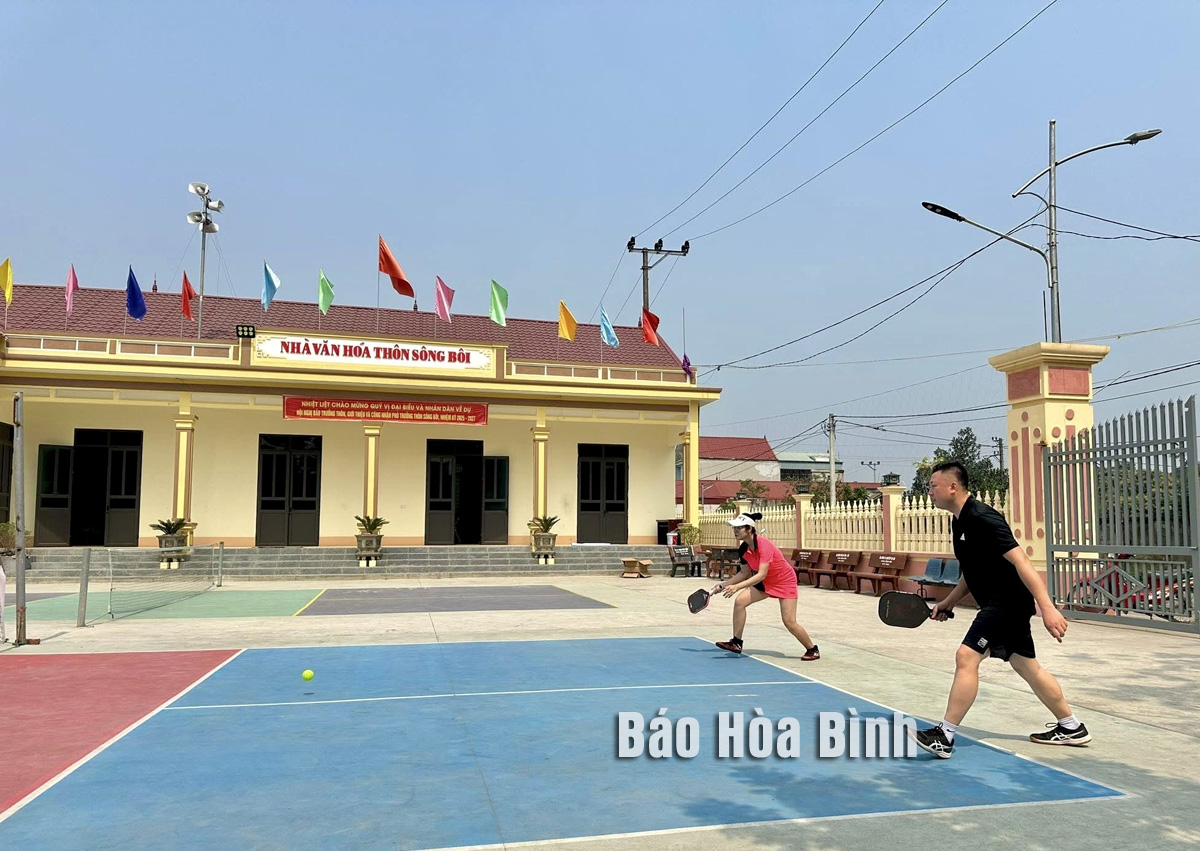



The cultural house in Song Boi Hamlet, Phu Nghia Commune (Lac Thuy) has been equipped with appropriate infrastructure and equipment to meet the needs of community activities.
According to statistics, in the district there is one district-level cultural house with a construction area of 620 m² and 328 seats; one newly built cultural house with an area of 2,000 m² and 500 seats; one stadium with an area of 2,000 m², featuring a track and a covered stage; A multi-purpose sports complex with badminton, basketball, volleyball, and tennis courts.
At the commune level, all 10 communes and townships have either a cultural house or a community learning center. These cultural facilities largely meet the needs of community activities. Nine out of the ten communes and townships have a stadium. Chi Netownship shares the district stadium, while Ba Hang Đoi township and Phu Nghia commune each have two stadiums.
Out of 112 villages and residential areas, 111 villages have community cultural houses. The only exception is Dong De hamlet in Dong Tam commune, which currently uses the "Uncle Ho Statue Hall” for gatherings. (However, the commune has already allocated a 2,000 m² land plot for constructing a dedicated cultural house). All village-level cultural houses meet the required land area criteria, with most facilities having 100 m² or more and seating for 100 to over 150 people. Most also feature simple sports grounds within the premises.
According to Ms. Nguyen Thi Thanh Tam, the Head of the district’s Department of Culture, Science, and Information, the village and residential cultural houses are well planned and located in the accessible areas with the designs appropriate to the district’s socio-economic conditions and cultural identity. These spaces serve not only for social gatherings but also for hosting vibrant cultural and sports activities that fulfill the local political missions and enrich residents’ cultural and spiritual lives. They contribute to building a healthy cultural environment and help reduce social evils and negative phenomena.
The grassroots cultural and sports facilities play an important role in meeting residents’ needs for social interaction, cultural enjoyment, and physical activities. They have helped renew the appearance of the local communities and improve the quality of the movement "All People Unite to Build a Cultural Life”. Most of the cultural house equipment has been provided through the local community contributions. Funding from the National Target Program on New Rural Development has supported six villages, while the National Target Program for Socio-Economic Development of Ethnic Minority and Mountainous Areas has supported 15 villages and residential areas in purchasing equipment for their cultural houses.
However, Ms. Tam also pointed out several challenges. In some communes and townships, the stadiums are underutilized or not used effectively. Some village cultural houses do not meet the required standards for stage size or seating capacity. There are still degraded facilities and underdeveloped cultural infrastructures, affecting residents’ access and participation in cultural life.
To maximize the use of these grassroots cultural and sports facilities, it is essential to strengthen leadership by local Party committees and authorities in raising public awareness about the role and importance of these facilities; Link the promotion of cultural and sports activities with the "All People Unite to Build a Cultural Life" campaign; Innovate the content and methods of operation at these facilities; Align activities with local political tasks and community interests; Develop more cultural, arts, and sports clubs to attract community participation; Promote social mobilization and gradually attract investment in the local cultural and sports development.